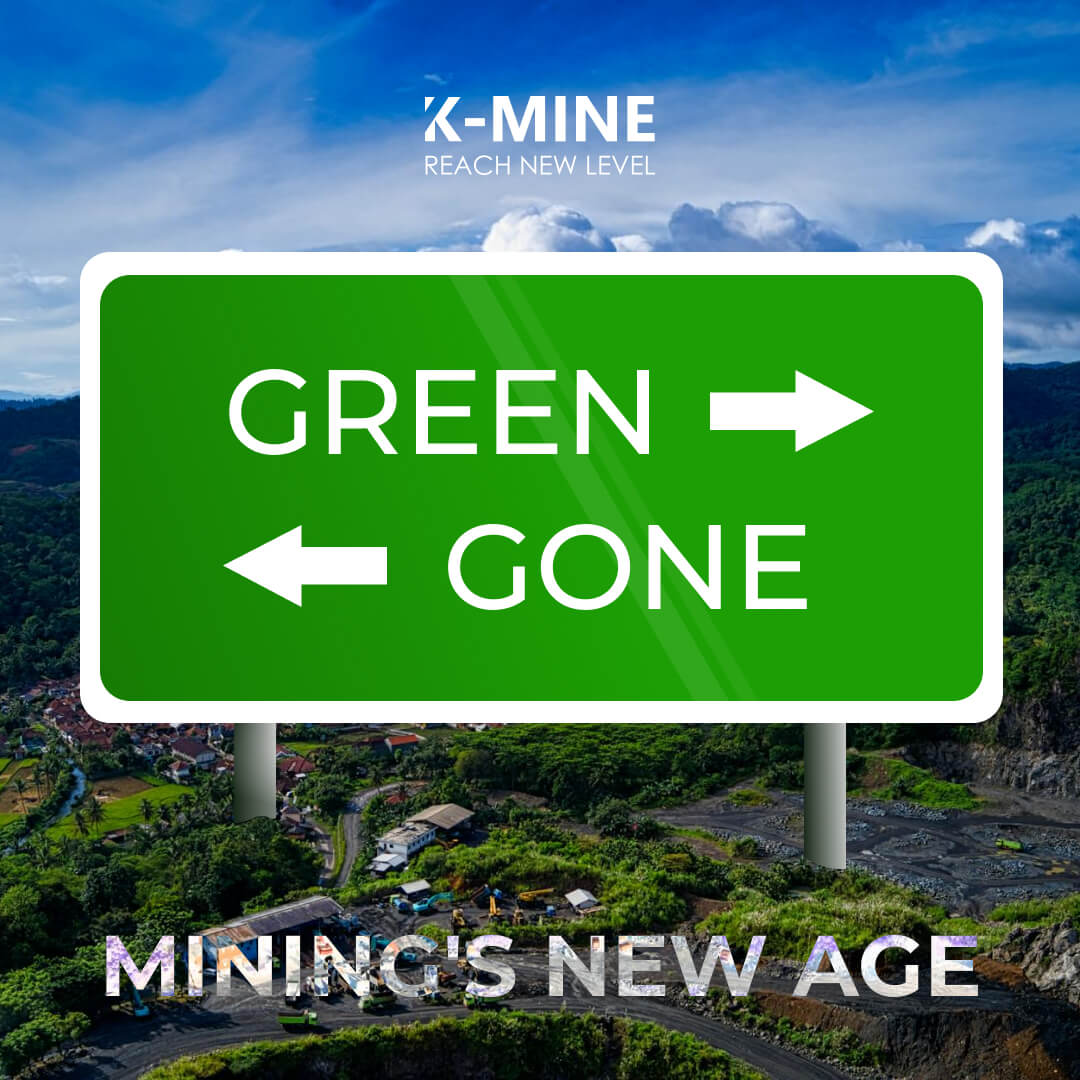 The Crossroads
The Crossroads
The mining industry, a cornerstone of the global economy, is at a crucial juncture. Faced with escalating environmental regulations, a growing demand for sustainable practices, and the rising cost of traditional energy sources, mining companies are finding that transitioning to renewable energy is no longer an option—it’s a necessity.
This shift is not just about compliance or public image. It’s about leveraging new opportunities that renewable technologies bring. Innovations in solar, wind, and hydro energy are not only making operations cleaner but also potentially more cost-effective in the long run. With the world watching and the stakes higher than ever, the mining sector must decide its path forward. Will it embrace these changes and lead by example, or will it cling to outdated methods that may soon render it obsolete?
In this article, we’ll explore why the move to renewables is critical for the future of mining and how it represents not just a challenge, but a substantial opportunity for innovation and growth.
The Green Imperative
Canada, known for its vast natural resources and proactive environmental policies, leads the way in this transition, setting a powerful example for other nations. The Canadian government’s aggressive targets to reduce greenhouse gas emissions by 40-45% below 2005 levels by 2030 have catalyzed the mining industry to adopt renewable energy technologies. This shift is not just about compliance; it represents a broader commitment to environmental stewardship and economic resilience. Programs like the Clean Growth Program in the mining sector support projects that enhance competitiveness through technological innovations while reducing environmental impacts.
Hydroelectric power, which is abundantly available and cost-effective in Canada, now powers a significant portion of the country’s mining operations. Companies such as Teck Resources Limited have set ambitious goals, aiming for carbon neutrality by 2050. This includes substantial investments in solar and wind projects, highlighting a trend that extends beyond Canadian borders.
Internationally, mining companies are also embracing the renewable energy trend. In Chile, solar energy powers some of the world’s largest copper mines, capitalizing on the country’s high solar irradiance. Meanwhile, in Australia, hybrid systems that combine wind, solar, and battery storage are becoming commonplace, driven by both the availability of these technologies and local regulatory pressures.
These global shifts are supported by economic incentives. Renewable energy typically offers lower operational costs over time, a crucial factor given the volatility of fossil fuel prices. In Canada, tax incentives for green technology adoption further enhance the financial viability of these investments. Such incentives are becoming common in other mining-rich countries, encouraging a global shift toward greener practices.
Consumer and investor demand for sustainable and ethically sourced minerals continues to shape the industry too. Companies adopting green practices are not only mitigating their environmental impact but also enhancing their marketability. Minerals such as lithium, cobalt, and rare earth elements, critical for renewable energy systems and electric vehicles, are particularly scrutinized for ethical sourcing.
Technologies Driving Change
Renewable Energy Integration
Solar Power: Modern photovoltaic systems tailored for mining operations are highly efficient, even in less sunny conditions, thanks to bifacial solar panels that capture sunlight from multiple angles. These systems are integrated with advanced tracking technology to maximize energy absorption throughout the day.
Wind Energy: Cutting-edge wind turbines designed for the harsh conditions of remote mining sites can now operate at lower wind speeds, increasing their viability. The latest models include enhanced aerodynamics and materials engineered for longevity and reduced maintenance.
Hydroelectric Power: Small and micro-hydroelectric plants, utilizing advanced turbine technology, can be integrated into existing water management systems of mines without significant environmental disruption. These plants feature modular designs for quick deployment and scalability.
Geothermal Energy: Geothermal systems for mining use enhanced geothermal systems (EGS) technology, which exploits deep-earth heat in non-volcanic areas. This involves drilling into the earth’s crust at a depth where significant heat is available and using it to generate power.
Energy Storage Solutions
The advent of solid-state batteries presents a breakthrough in energy storage, offering higher energy density and faster charging times compared to traditional lithium-ion batteries. These batteries are more stable and less prone to overheating, making them ideal for demanding applications in mining environments.
Automation and Electrification
Electric Vehicles (EVs): The latest generation of electric mining vehicles includes fast-charging technologies and energy recovery systems that significantly extend their operational range and efficiency. These vehicles are integrated with digital interfaces for real-time energy management.
Automated Drilling and Excavation: High-precision GPS and AI-based predictive analytics are now standard in automated drilling systems, allowing for real-time adjustments based on geological feedback. This not only conserves energy but also maximizes material recovery, reducing waste.
Smart Grids: Adaptive smart grid technologies are being deployed in mines to dynamically manage both the supply of renewable energy and the demand from mining operations. These systems use machine learning algorithms to predict energy needs and adjust the power supply instantaneously.
Green Processing Technologies
Advanced mineral processing technologies, such as sensor-based ore sorting and electromagnetic separation, allow for more targeted extraction processes, significantly reducing energy consumption per ton of ore processed. These technologies are complemented by real-time data analytics for continuous process optimization.
Case Studies: Leaders in Green Mining
Teck Resources Limited, Canada
Teck Resources is spearheading efforts to reduce carbon emissions in its operations, aiming for carbon neutrality by 2050. A significant part of their strategy includes the use of hydroelectric power at their Highland Valley Copper operations, which has dramatically reduced the need for conventional energy sources. This initiative not only decreases carbon emissions but also sets a standard for renewable energy integration in mining.
BHP, Australia
BHP has implemented large-scale solar power installations at its Olympic Dam site in South Australia. This project reduces the site’s reliance on diesel and marks a significant step towards sustainable energy use in mining operations. The initiative is a part of BHP’s broader strategy to reduce its environmental footprint and establish a more sustainable operational framework.
Anglo American, South Africa
Anglo American is pioneering the introduction of hydrogen-powered haul trucks, which are designed to replace diesel engines and eliminate CO2 emissions from these operations. This innovative approach is part of their broader strategy to reduce the environmental impact of their mining activities and contribute to more sustainable mining practices globally.
Agnico Eagle Mines Limited, Finland
At its Kittilä mine in northern Finland, Agnico Eagle is utilizing geothermal heating to manage energy use in extreme climates efficiently. This sustainable energy solution not only reduces the mine’s energy consumption but also demonstrates how mines can operate more sustainably in harsh environmental conditions.
Newmont Corporation, USA
Newmont is leading by example with its integration of solar farms and solar-battery hybrid systems across its Nevada mining operations. These initiatives are crucial in reducing the operations’ carbon footprint and demonstrate Newmont’s commitment to renewable energy and sustainable mining practices.
These case studies highlight the significant progress being made by leading mining companies in adopting renewable energy and innovative technologies. These efforts are commendable and showcase the potential for the mining industry to reduce its environmental impact and lead in sustainability.
However, it’s important to acknowledge that these initiatives, while groundbreaking, are just the beginning. The path to fully sustainable mining involves ongoing commitment and continuous improvement. These companies are setting the pace, demonstrating that substantial environmental performance gains are possible and profitable. Yet, the journey ahead remains long, and the entire industry must strive for broader and deeper changes to ensure a sustainable future for all.
The Economic Angle
Reduced Operational Costs
The advancement and scaling of renewable energy technologies have led to a significant decrease in costs. For instance, according to the International Renewable Energy Agency (IRENA), the global weighted average LCOE of utility-scale solar photovoltaics decreased from $0.381 per kWh in 2010 to $0.068 per kWh in 2019, a reduction of over 82%. Similarly, onshore wind costs have fallen from $0.089 per kWh in 2010 to $0.053 per kWh in 2019.
For mining operations, which are energy-intensive and often located in remote areas, these cost reductions are crucial. Solar and wind installations can offset much of the high costs associated with diesel generators, which can be as much as $0.15 to $0.30 per kWh, depending on location and fuel transport costs.
Tax Incentives and Financial Support
Many countries offer significant tax incentives that enhance the financial feasibility of renewable projects in mining. In the U.S., the Investment Tax Credit (ITC) for solar energy allows for a deduction of 26% of the installation cost from federal taxes. Canada offers Accelerated Capital Cost Allowance for clean energy equipment, allowing companies to write off 100% of their investment in the first year.
Increased Investment Attraction
Sustainability metrics are increasingly influencing investment decisions. A 2020 survey by MSCI indicated that 52% of institutional investors consider ESG factors in their portfolio construction, up from 36% in 2018. Furthermore, S&P Global has noted that firms with strong ESG scores generally exhibit a lower cost of debt and equity; mining companies committed to sustainable practices often enjoy more favorable financing conditions.
Regulatory Compliance and Risk Mitigation
Adopting renewable energy can significantly reduce compliance costs and risks associated with environmental regulations. In the EU, for example, the Carbon Border Adjustment Mechanism (CBAM) will impose costs on imports of carbon-intensive products. Mining companies that reduce their carbon footprint will face lower CBAM costs compared to those that do not.
Enhanced Marketability and Consumer Demand
The demand for “green” minerals is growing rapidly. The World Bank estimates that the production of minerals such as graphite, lithium, and cobalt could increase by nearly 500% by 2050 to meet the demand for clean energy technologies. This trend presents a unique opportunity for mining companies to position themselves in emerging markets that favor sustainability.
The Other Side of Green
While the adoption of green technologies in the mining industry offers numerous environmental and economic benefits, it’s essential to confront the complexities and potential drawbacks associated with this transition. A thorough understanding of these challenges is crucial for developing more effective and truly sustainable mining practices.
The shift towards renewable energy and other green technologies significantly increases the demand for specific minerals such as lithium, cobalt, and rare earth elements. According to the International Energy Agency (IEA), demand for lithium could grow 40 times by 2040 under an accelerated energy transition scenario. This surge not only strains supply chains but also raises concerns about the environmental impact of extracting these materials at such large scales.
For instance, lithium mining, which is vital for battery production, involves extensive water usage that can lead to shortages and contamination in local communities. Studies in regions like the Atacama Desert in Chile have documented how lithium extraction has altered water tables and negatively affected local ecosystems. Similarly, the processing of raw materials for green technologies, like the refining of rare earth elements, is not only energy-intensive but has historically produced a significant amount of hazardous waste. Efforts are ongoing to improve the efficiency and reduce the environmental footprint of these processes, yet considerable challenges remain.
Moreover, the economic and social impacts of transitioning to green mining technologies cannot be overlooked. The automation and digitization associated with modern mining practices may reduce the number of workers needed, potentially leading to job losses in communities reliant on traditional mining jobs. The concentration of mineral wealth can also exacerbate social and economic inequalities, affecting both local communities and the global distribution of wealth.
Additionally, there is a risk that reliance on technological solutions might overshadow the need for broader systemic changes in the industry. Technologies such as carbon capture and storage (CCS) or advanced material recycling are promising but still in developmental stages. They may not achieve the scale or cost-effectiveness necessary to significantly mitigate environmental impacts within the required timeframes.
In conclusion, while green technologies provide a promising path toward more sustainable mining practices, balancing their benefits with potential environmental, social, and economic costs is key to achieving true sustainability. This approach ensures that the mining sector’s transition not only favors technological innovations but also promotes responsible and equitable practices globally. Recognizing these hidden costs allows the industry to tackle them proactively, paving the way for a more holistic approach to sustainable mining.



 Back
Back

